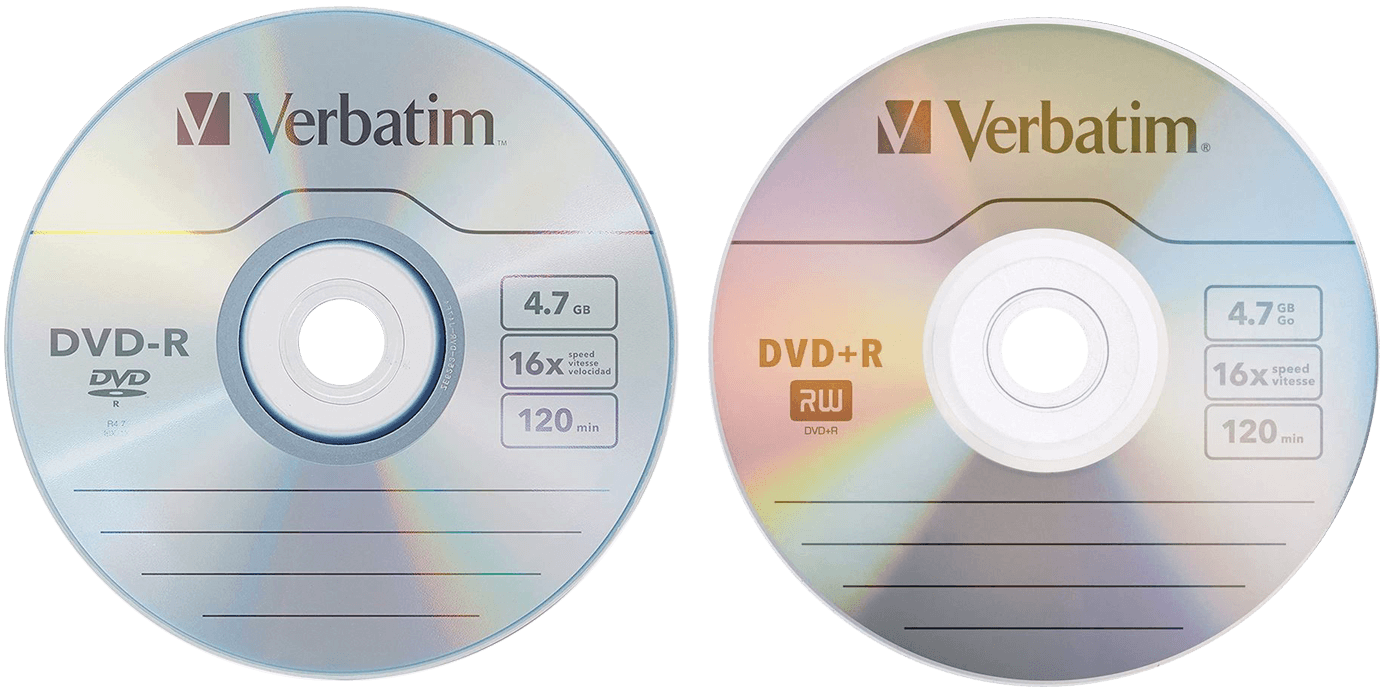DVD+R
Stands for "Digital Versatile Disc Recordable" and is pronounced "DVD plus R."
DVD+R is one of two standards for recordable DVDs along with DVD-R. Data written to a DVD+R is permanent and cannot be erased or modified once on the disc. DVD+R discs are slightly less compatible with DVD players than the competing DVD-R format, but most DVD players and drives can read them. Single-layer DVD+R discs have a capacity of 4.7 GB of data or video; double-layer discs increase that to 8.5 GB. Only a compatible DVD+R or Hybrid (DVD±R) drive can write to a DVD+R disc. The rewritable version of DVD+R is called DVD+RW.
DVD+R and DVD-R discs are both writable optical media formats that operate on the same principle, using a laser to burn a series of spots onto a layer of heat-sensitive dye on a blank disc. These spots serve the same function as the pits on a professionally-pressed DVD, encoding digital data that the laser in the drive reads and decodes. Both types have microscopic grooves that run from beginning to end to guide the laser and keep it on track. This groove has a slight but consistent wobble that ensures the disc is spinning at the correct speed. It wobbles at a much faster frequency on a DVD+R disc, 817.4 kHz, compared to 140.6 kHz on a DVD-R.
The other significant difference between the two standards is that DVD+R drives use a more precise method to track where that data is written on the disc to make it easier to add information over multiple sessions. Starting a second writing session on a DVD-R requires a larger buffer between the two sessions, wasting a small amount of disc space. DVD+R discs are also slightly less expensive to manufacture.
Competing Formats
DVD-R and DVD+R are two similar standards for writing to a DVD, developed at roughly the same time by two competing industry groups. The DVD-R format was developed first by Pioneer in 1997, with the support of the DVD Forum licensing group. Sony and Philips formed the DVD+RW Alliance and developed DVD+R in 2002 as a competing standard using some of the same technology the two companies had used in the CD-R standard years earlier. The DVD Forum controlled all official DVD licensing and logos, and did not allow DVD+R the status of an official DVD product until several years later.

The technology used by both standards was similar enough that disc drives that could write one format could technically write to the other. However, drive manufacturers had to pay a licensing fee to whichever group whose standard they supported. Drives were initially limited to one standard or the other, but eventually, manufacturers began licensing both technologies and producing "Hybrid" or "DVD±R" drives that supported both formats.
 Test Your Knowledge
Test Your Knowledge